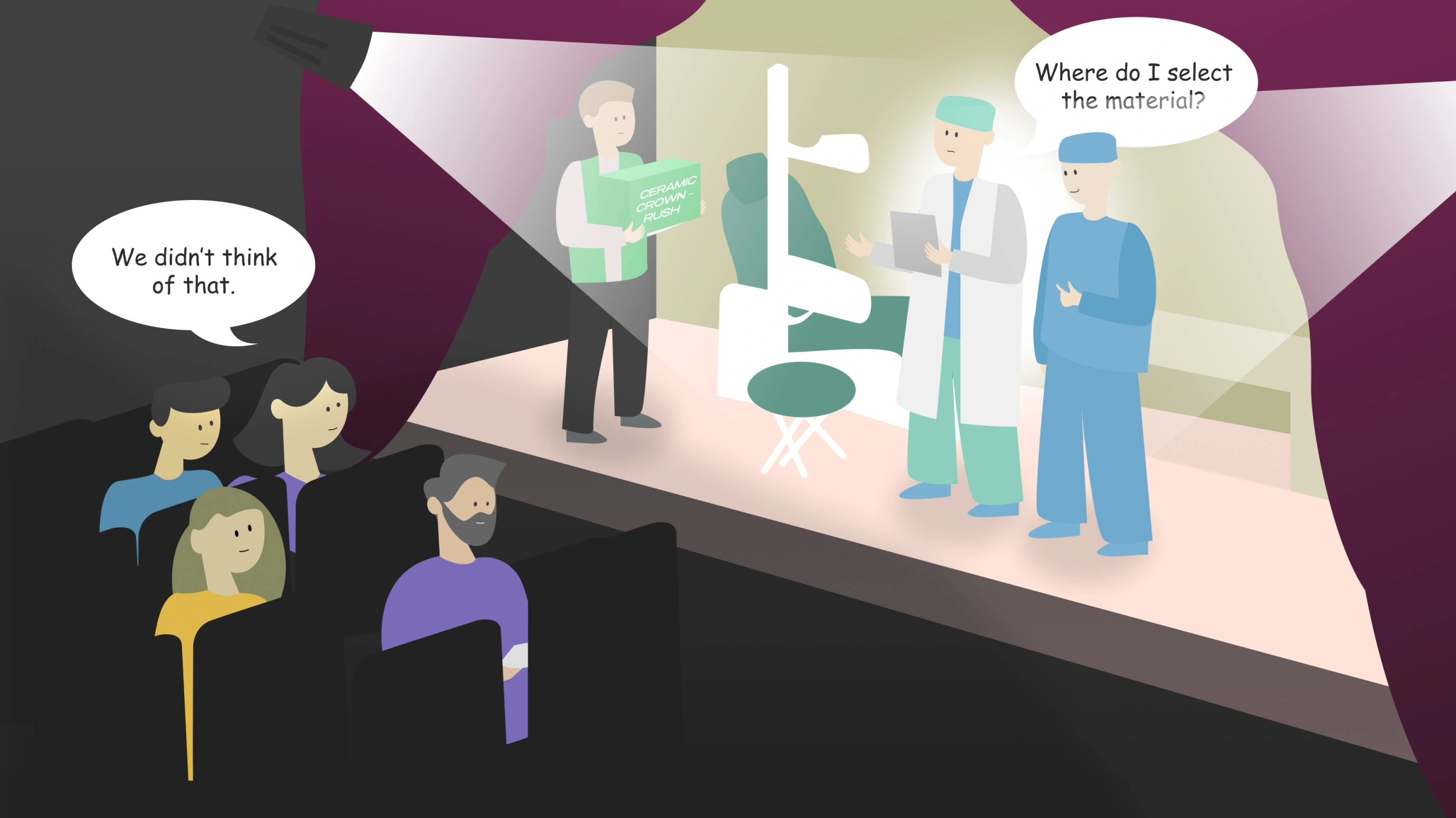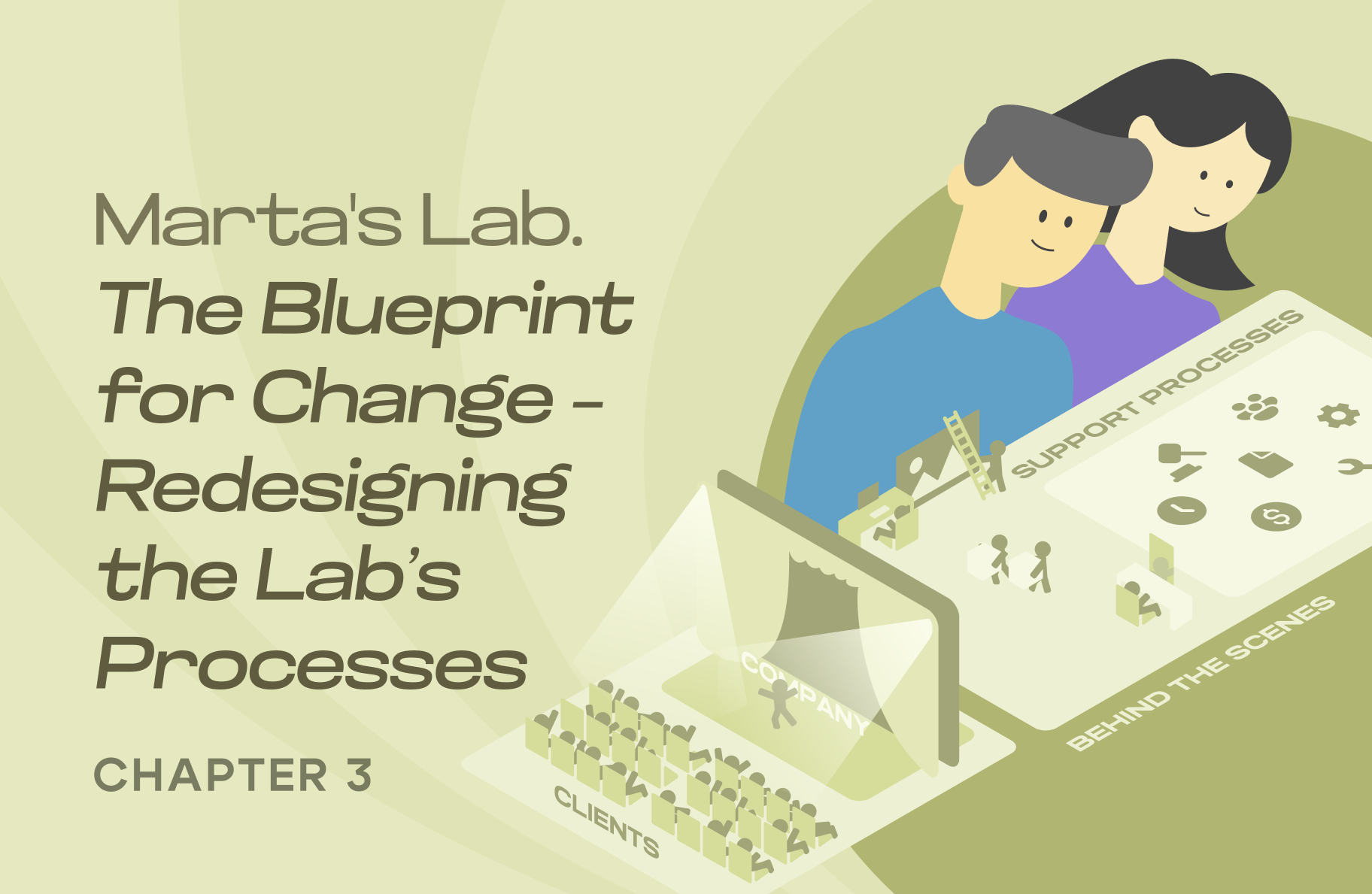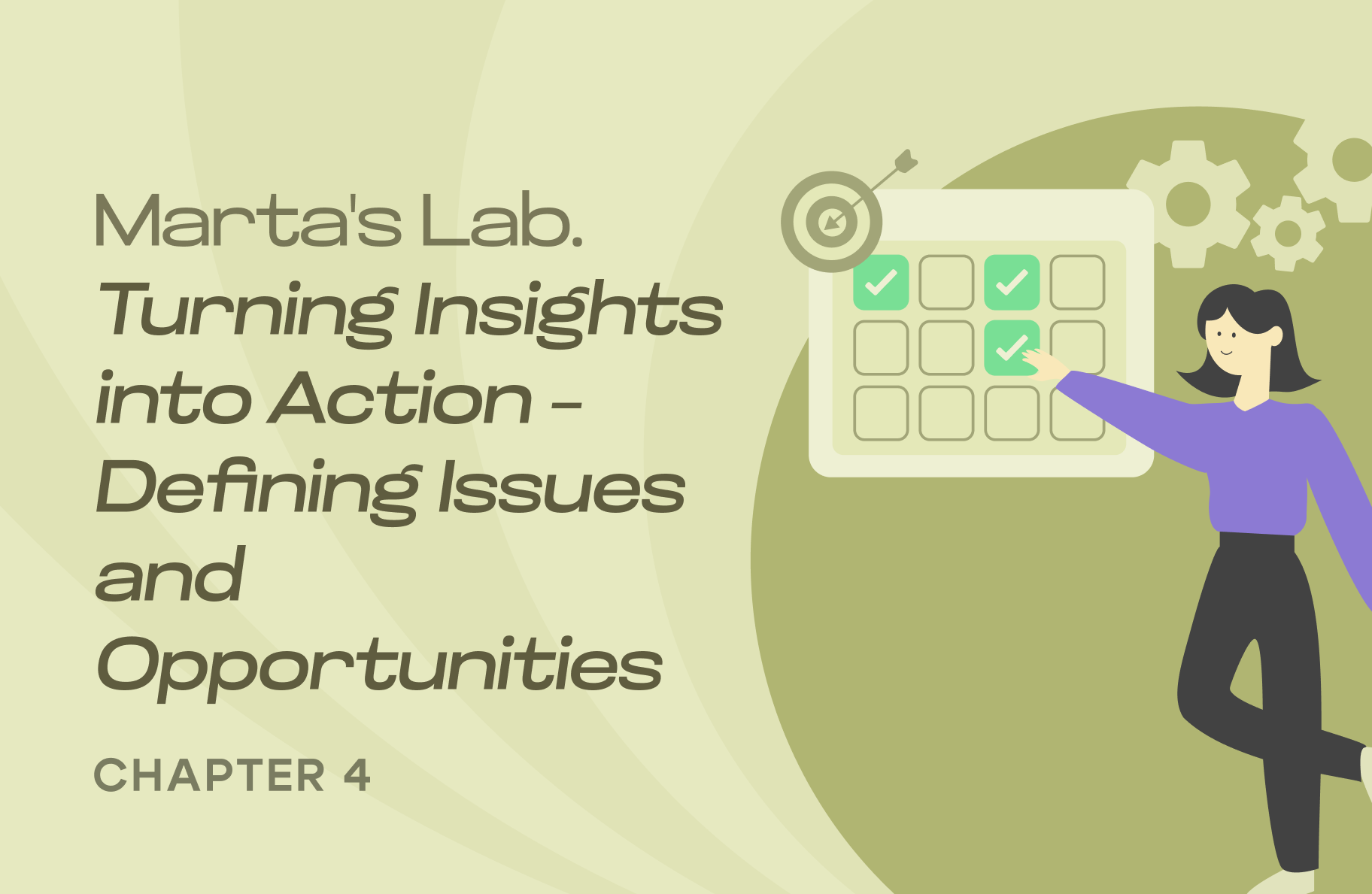
Marta had been cautiously optimistic as the team prepared to roll out their prototypes. After weeks of journey mapping, client interviews, and brainstorming sessions, they believed they had the answers. The solutions seemed elegant on paper: an intuitive online order portal, a streamlined delivery process, and a revamped case-tracking system.
But when they moved from ideas to execution, the cracks began to show.
A Rocky Start
Their first round of prototyping didn’t just fizzle — it flopped.
The paper mock-up for the order portal, introduced to a group of trusted clients, didn’t land as intended. Dr. Kaminski was the first to speak up, but his tone was far from encouraging.

Dr. Robinson
This looks nice but it’s a waste of time. I just want to send you an order in two clicks, not navigate through a maze.
Dr. Nowak’s feedback stung even more.

Dr. Nowak
This doesn’t even integrate with my scanner. It’s like you’re making me do extra work.
For Marta, it felt like the floor had been pulled out from under her. They’d poured weeks into designing a solution based on the feedback they thought they understood.
Levi, ever the calm presence, observed the reactions and took notes.
Levi
This is why we test.
He reminded the team later. But his words did little to soothe the growing frustration.
Tensions Rise
Back at the lab, the fallout from the failed prototypes ignited a storm of blame.
Tom
We did what the journey map said! If it’s not working, maybe the dentists don’t know what they want.
Yasmin
Or maybe we didn’t actually listen. We focused too much on what we thought would work.
Levi
Let’s channel this energy into understanding what went wrong. What assumptions did we make? What gaps did we miss?
Marta
We’re going in circles. What if we’re just wasting everyone’s time?
A New Plan: Investigative Rehearsal
The sting of negative feedback lingered, but Levi encouraged the team to pivot rather than despair.
Levi
Feedback isn’t failure — it’s fuel. Let’s figure out what’s not working before we commit to the final design.
Yasmin
So, another prototype?
Levi
Not just a prototype. An investigative rehearsal. We’ll simulate the new workflow in a realistic environment and observe what happens in real-time.
Marta
You mean like role-playing?
Levi
Well, ‘role-playing’ has become a buzzword with a rather negative connotation. Let’s better associate a rehearsal with a theater.
We’ll stress-test the process with a client, technicians, and delivery staff. It’s messy, but that’s the point — to uncover problems we can’t see on paper.
The idea was bold and risky, but Marta agreed.
Marta
Let’s do it.
Setting the Stage
The team chose a real, complex workflow: the order submission and tracking process. Levi worked with Marta to design the rehearsal:
- Participants: Dr. Robinson agreed to act as the test client, placing an order as he would in real life. Lab technicians and delivery staff joined to play their respective roles.
- Tools: The prototype portal, although flawed, would be used. A technician’s workstation and mock delivery schedules completed the setup.
- Scenario: Dr. Robinson would submit a case, track its progress, and receive the finished restoration mirroring the actual client experience.
The goal was not just to test the system but to observe how people interacted with it and identify pain points in real-time.
The Rehearsal Begins
Dr. Robinson arrived, armed with a case for a ceramic crown. Marta and the team watched from the sidelines as he navigated the prototype portal. Almost immediately, the first issue emerged.

Dr. Robinson
I can’t find where to select the material. This menu doesn’t make sense.
Tom scribbled notes furiously. Yasmin leaned in.
Yasmin
We didn’t think about making the material selection mandatory. We assumed they’d know where to look.
Dr. Robinson eventually submitted the case, but the frustration didn’t end there. In the lab, the technician reviewing the order noticed an error in the shade selection.

Dr. Robinson
This isn’t usable as is. I’ll have to call him.
Marta
We’re creating extra steps for everyone.
Introducing a Curveball
To push the system further, Levi added a twist to the scenario — a simulated delay in production caused by an equipment malfunction. The lab staff scrambled to adjust schedules, but communication broke down. Dr. Robinson was left waiting without any updates.

Dr. Robinson
This is exactly the kind of situation I dread. No communication means I’m stuck explaining to patients why their crowns aren’t ready.
The rehearsal exposed glaring weaknesses:
- The portal’s design didn’t guide clients effectively, leading to errors and delays.
- The communication flow during disruptions was nonexistent.
- Staff relied on workarounds instead of the new system, highlighting a lack of alignment.
Reflection and Redirection
After the rehearsal, the team gathered to debrief. The mood was somber but determined.
Levi addressed the group.
Levi
This is why we rehearse. We’ve seen the system in action, and now we know where to focus.
Yasmin
We need to fix the portal so it’s intuitive, not just functional. And we need a protocol for keeping clients informed during delays.
Tom
Yeah, we made too many assumptions. Let’s revisit the journey map and focus on the biggest pain points.
Marta, though still shaken, felt a renewed sense of purpose.
Marta
We can’t avoid the messy parts. If this is what it takes to get it right, so be it.
Moving Forward
The investigative rehearsal was a turning point. The team took the insights and began rebuilding:
- The portal was redesigned to guide clients step-by-step and flag missing details.
- A communication protocol was established, with automated updates to keep clients informed during delays.
- Training sessions were planned to ensure alignment between the lab’s staff and the new processes.
Though the road was rocky, Marta realized the value of embracing challenges. “It’s not failure — it’s progress,” she reminded herself. And with each step, the team grew closer to delivering a service that truly worked for everyone involved.
What’s Next?
With the revised prototypes ready for a second round of testing, Marta must now turn her attention to the human side of transformation: managing resistance, fostering buy-in, and ensuring everyone feels invested in the change. In the next chapter, we’ll explore how Marta leads her team through the complexities of change management.
Stay tuned for the next step in Marta’s journey!



